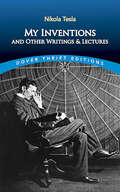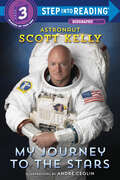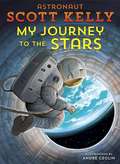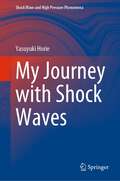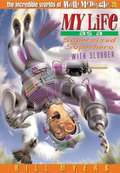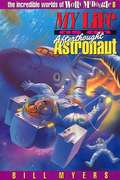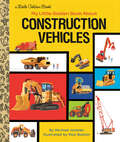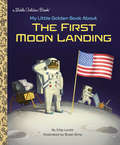- Table View
- List View
My Inventions and Other Writing and Lectures (Dover Thrift Editions)
by Nikola TeslaThis volume presents one of the richest and most comprehensive collections of writings by Nikolai Tesla, a founding figure of the modern electrical power industry and long-time rival of Thomas Edison. Included is Tesla's autobiography, My Inventions, and the lengthy philosophical essay "The Problem of Increasing Human Energy: With Special Reference to the Harnessing of the Sun's Energy," as well as a series of lectures: "A New System of Alternate Current Motors and Transformers," "On Electricity," and more.
My Inventions and Other Writings
by Nikola TeslaThe fascinating autobiography of the legendary inventor behind the radio, wireless energy, robotics, and much more. Famous for his pioneering contributions to the electronic age, his lifelong feud with Thomas Edison, and his erratic behavior, Nikola Tesla was one of the most brilliant and daring inventors and visionaries of his time. My Inventions is Tesla's autobiography, with meditations on his major discoveries and innovations, including the rotating magnetic field, the magnifying transmitter, and the Tesla coil. This volume also includes three articles by Tesla, as well as an enlightening introduction that discredits many of the myths surrounding the thinker's eccentric life. This rare window into the industrial age's most tragic genius will fascinate historians, scientists, aspiring inventors, and curious fans alike. .
My Inventions: The Autobiography of Nikola Tesla
by Nikola TeslaNikola Tesla has been called the most important man of the twentieth century. Certainly he contributed more to the field of electricity, radio, and television than any other person living or dead. Ultimately he died alone and impoverished having driven all of his friends away through his neurotic and eccentric behavior. Tesla was never able to fit into the world that he found himself in. This autobiography, originally serialized in Electrical Experimenter, is an intensely fascinating glimpse into the mind of a genius, his inventions, and the magical world in which he lived.
My Journey to the Stars: Step Into Reading Edition (Step Into Reading Ser.)
by Scott KellyIn this debut autobiographical picture book, celebrated astronaut Scott Kelly describes how he -- and his twin brother -- grew up to achieve his dream of becoming an astronaut.As Scott Kelly prepares to blast back to Earth after a record-breaking year spent on the International Space Station, he thinks about what brought him here and what awaits him at home. Scott's partner-in-crime is his twin brother, Mark. They spent their childhood getting in and out of scrapes. They had a talent for finding trouble and taking risks, which turned out to be great training for the biggest risk of all -- space travel. Along the way to becoming astronauts, they learned to be peacemakers, to stay calm in the toughest of times, to support their family, to work hard and take small steps towards their goals. Scott learned that he needed people to believe in him, as his principal did, even though he was at first a terrible student who couldn't sit still. All of these skills served him well during his year on the ISS, where he and his crew ran 400 experiments and he himself became a test subject. The sacrifices Scott made, the dangers he faced and the sight of our beautiful planet from space made coming home even sweeter.
My Journey to the Stars: Step Into Reading Edition (Step Into Reading Ser.)
by Scott KellyNASA astronaut Scott Kelly makes his Step into Reading debut in this engaging and easy-to-read autobiography that takes readers on his awe-inspiring journey from childhood to his record-breaking year among the stars.A Step 3 Biography Reader of American hero, Astronaut Scott Kelly! Scott wasn't sure what he wanted to be when he grew up. He struggled in school and often got in trouble with his twin brother, Mark. Then one day Scott discovered a book about test pilots and astronauts that set him on a new path.His new focus led him to fly higher and higher, becoming first a pilot and then an astronaut, along with his brother--the first twin astronauts in history. But his greatest accomplishment of all was commanding the International Space Station and spending nearly a year in space, which set the record for the longest spaceflight by an American.This story of an ordinary boy who grew up to do extraordinary things will amaze and inspire young readers.Step 3 Readers feature engaging characters in easy-to-follow plots about popular topics--for children who are ready to read on their own.
My Journey to the Stars: Step Into Reading Edition (Step Into Reading Ser.)
by Scott KellyNASA astronaut Scott Kelly was the first to spend an entire year in space! Discover his awe-inspiring journey in this fascinating picture book memoir (the perfect companion to his adult book Endurance) that takes readers from Scott&’s childhood as an average student to his record-breaking year among the stars. Scott Kelly wasn&’t sure what he wanted to be when he grew up. He struggled in school and often got in trouble with his twin brother, Mark. Then one day Scott discovered a book about test pilots and astronauts that set him on a new path. His new focus led him to fly higher and higher, becoming first a pilot and then an astronaut, along with his brother—the first twin astronauts in history. But his greatest accomplishment of all was commanding the International Space Station and spending nearly a year in space, which set the record for the longest spaceflight by an American. This story of an ordinary boy who grew up to do extraordinary things is perfect for children, fans of Scott's adult book Endurance: A Year in Space, A Lifetime of Discovery, aspiring astronauts, and anyone who has ever tried to defy the odds. It will amaze and inspire you.
My Journey with Shock Waves (Shock Wave and High Pressure Phenomena)
by Yasuyuki HorieThis book compiles historical notes and a review of the work of the author and his associates on shock compression of condensed matter (SCCM). The work includes such topics as foundational aspects of SCCM, thermodynamics, thermodynamics of defects, and plasticity as they relate to shock compression, shock-induced phase transition, and shock compaction. Also included are synthesis of refractory and hard ceramic compounds such as Ni aluminides, SiC and diamonds, method of characteristics, discrete element methods, the shock compression process at the grain scale, and modeling shock-to-detonation transition in high explosives. The book tells the story of how the author’s view of shock physics came to be where it is now. and analytically discusses how the author’s appreciation of shock waves has evolved in time. It offers a personal but pedagogical perspective on SCCM for young scientists and engineers who are starting their careers in the field. For experts it offers materials to nudge them reflect on their own stories, with the hope of planting a seed of motivation to write them down to be published.
My Life as a Supersized Superhero... with Slobber (The Incredible Worlds of Wally McDoogle #28)
by Bill MyersAt last, Wally can have the superpowers he has always dreamed of and written about! Thanks to the newest invention of Junior Whiz Kid, Wally now has . . Laser-Blaster Eye Beams-handy for catching those bad guys . . . and reheating your hot chocolate. Inviso Shield-a flip of the switch and your invisible . . . except for you're underwear. Extendo Arms-great for back scratching those hard to reach spots . . . particularly if they're a thousand miles away. These and a dozen other superpowers allow him to try to make the world a better place . . . until he realizes that the biggest differences are not made by flashy superheroes, but by everyday people doing everyday acts of kindness.Join our boy blunder as he learns the true meaning of helping and caring for others.
My Life as an Afterthought Astronaut (The Incredible Worlds of Wally McDoogle #8)
by Bill MyersWhen accident-prone Wally McDoogle finds himself a part of a space shuttle mission, he learns a lesson about the importance of obeying the rules.
My Life in Space Exploration (Springer Biographies)
by Gerhard HaerendelThis book tells the inside story of Germany's first contributions to space research by experiments with artificial plasma clouds in space. In this autobiography, Gerhard Haerendel, former director at the Max Planck Institute for Extraterrestrial Physics, describes his 60 adventurous years in space research. The narrative of exciting events—covering 40 years of rocket and satellite work–is underpinned with accessible accounts of the actual physical phenomena and processes involved. The reader also learns about how the goals set by a visionary astrophysicist eventually led to one of Germany's first major contributions to space research by the creation of artificial comets in the solar wind.Haerendel's efforts also led to two further satellite programs, one in partnership with Sweden, focusing on the aurora borealis, the other, a national German endeavor, to explore the outer border of the magnetosphere. A further interesting chapter concerns his engagement in the evaluation and restructuring of eastern German Academy institutes after reunification.All readers interested in space research and its history will enjoy sharing the fascinating experiences and dramatic events that accompany the story throughout, even some spectacular failures relating to rocket campaigns.
My Little Eye: A mega-twisty, gripping crime thriller that will leave you breathless
by Stephanie Marland Stephanie BroadribbThe first novel in what promises to be a riveting new series, My Little Eye is a one-sitting read: gripping, clever and worryingly plausible. - Mick Herron * * * Can a group of true crime addicts take on the police to catch a serial killer? KISS THE GIRLS AND MAKE THEM DIE...A young woman is found dead in her bedroom surrounded by rose petals - the latest victim of 'The Lover'. Struggling under the weight of an internal investigation, DI Dominic Bell is no closer to discovering the identity of the killer and time is running out.As the murders escalate, Clementine Starke joins an online true crime group determined to take justice in their own hands - to catch the killer before the police. Hiding a dark secret, she takes greater risks to find new evidence and infiltrate the group. As Starke and Bell get closer to cracking the case neither of them realise they're being watched. The killer is closer to them than they think, and he has his next victim - Clementine - firmly in his sights. Perfect for fans of Sweet Little Lies, Friend Request and Follow You Home. The thriller with twists you'll never see coming! * * * * *'My Little Eye is an enthralling, intriguing and twisty tale for all of us armchair detectives who think we know it all.' Liz Nugent, author of Lying In Wait and Unravelling Oliver'A masterclass in pacing & such an original take on the serial killer thriller.' - Eva Dolan, author of This Is How It Ends* * * * * What readers are saying about My Little Eye: 'This book is AMAZING!!!' Goodreads'Easily one of my favourite reads this year so far.' - Goodreads 'My Little Eye is a bang on psychological thriller of the most addictive kind.' Goodreads'Beautifully paced writing that had me speeding through every chapter at a rate of knots. Easily one of my favourite reads this year so far.' Goodreads
My Little Golden Book About Construction Vehicles (Little Golden Book)
by Michael JoostenLittle construction workers will love learning all about mighty construction vehicles with this nonfiction Little Golden Book!Put on your hard hats! My Little Golden Book About Construction Vehicles is a fact-filled look at a subject children are fascinated by! This book is full of exciting, colorful illustrations of cranes, excavators, bulldozers, cement mixers, and more. Boys and girls will love learning about all the heavy equipment used to build roads, skyscrapers, and bridges.Look for other nonfiction Little Golden Books, including: My Little Golden Book About TrainsMy Little Golden Book About AirplanesMy Little Golden Book About Bugs My Little Golden Book About Sharks My Little Golden Book About Weather
My Little Golden Book About the First Moon Landing (Little Golden Book)
by Charles LovittThe exciting story of the Apollo 11 mission!In this engaging Little Golden Book, preschoolers will enjoy the fascinating story behind what happened on July 20, 1969, when two human beings walked on the moon for the very first time. Little ones will learn about the rocket Saturn V, the command module Columbia, and of course the famous lunar lander Eagle, and how they each served to send astronauts into space. Kids will learn who the astronauts were and how they were chosen for the mission. And they'll hear Neil Armstrong's unforgettable words in his message back to Earth: "one giant leap for mankind." Fun facts about the astronauts' space suits and their work in space round out this exciting picture book.
My Little Golden Book About the Solar System (Little Golden Book)
by Dennis R. ShealyLittle Golden Books introduces your young reader to the solar system!This simple yet informative book brings our fascinating solar system to life for kids just learning how to read. They'll enjoy poring over the dramatic illustrations as they learn about planets, constellations, satellites, spacecraft, and more. Lively and up to date, this perfect "first book" will inspire little ones to search for shooting stars, constellations, and the Milky Way!
My Mechanical Romance
by Alexene Farol FollmuthOpposites attract in this battle-robot-building YA romance from the NYT best-selling author of The Atlas Six. Bel would rather die than think about the future. College apps? You&’re funny. Extracurriculars? Not a chance. But when she accidentally reveals a talent for engineering at school, she&’s basically forced into joining the robotics club. Even worse? All the boys ignore Bel—and Neelam, the only other girl on the team, doesn't seem to like her either. Enter Mateo Luna, captain of the club, who recognizes Bel as a potential asset—until they start butting heads. Bel doesn&’t care about Nationals, while Teo cares too much. But as the nights of after-school work grow longer and longer, Bel and Teo realize they've made more than just a combat-ready robot for the championship: they&’ve made each other and the team better. Because girls do belong in STEM. In her YA debut, Alexene Farol Follmuth, author of The Atlas Six (under the penname Olivie Blake), explores both the challenges girls of color face in STEM and the vulnerability of first love with unfailing wit and honesty. With an adorable, opposites-attract romance at its center and lines that beg to be read aloud, My Mechanical Romance is swoonworthy perfection. A Junior Library Guild Gold Standard Selection
My Pet Chicken Handbook: Sensible Advice and Savvy Answers for Raising Backyard Chickens
by Lissa Lucas Traci TorresThe backyard chicken is the new "it" pet—and with good reason: These birds are personable, beautiful, and (mostly) low maintenance. But they're not without their quirks and sometimes puzzling behaviors.That's where the experts at MyPetChicken.com have a beak up on the competition—they hear from chicken keepers daily and offer advice about common mistakes and pitfalls that occur when raising a flock of chickens in the backyard. And customers tell them that the advice they most appreciate is actually how not to raise chickens, what not to do, and why not to panic.My Pet Chicken Handbook helps potential chicken owners decide whether chicken keeping is right for them, how to make the best choices for their situations, how to start planning for the new pets, and—most importantly—how to head off potential trouble before the chicks arrive. Detailed care instructions for baby chicks and mature hens help to ensure a friendly and enjoyable flock. Covering both the good and the "oh no" experiences that beginners and avid backyard farmers experience, topics include choosing coops, planning a daily routine, learning about sanitation practices, and discovering signs of distress. Then the joy of chicken keeping comes full "ovoid" with 50 recipes for breakfast, lunch, and dinner, featuring the incredible and versatile egg, from homemade egg noodles and sesame mayonnaise to a vegetable frittata and caramel custard.
My Revision Notes: AQA A Level Design and Technology: Product Design
by Julia Morrison Dave SumpnerExam board: AQALevel: A-levelSubject: Design and TechnologyFirst teaching: September 2017First exams: Summer 2019Target success in AQA A Level Design and Technology (Product Design) with this proven formula for effective, structured revision. Key content coverage is combined with exam-style tasks and practical tips to create a revision guide that students can rely on to review, strengthen and test their knowledge.With My Revision Notes, every student can:- plan and manage a successful revision programme using the topic-by-topic planner- consolidate subject knowledge by working through clear and focused content coverage- test understanding and identify areas for improvement with regular 'Now Test Yourself' tasks and answers- improve exam technique through practice questions, expert tips and examples of typical mistakes to avoid- get exam ready with extra quick quizzes and answers to the practice questions available online.
My Revision Notes: AQA A-Level Design and Technology: Fashion and Textiles
by Kate Bush Julie DrakeExam board: AQA Level: A-levelSubject: Design and TechnologyFirst teaching: September 2017First exams: Summer 2019 Target success in AQA A-level Fashion and Textiles with our proven formula for effective, structured revision; key content coverage of both papers - Technical Principles and Designing and Making Principles - is combined with exam-style tasks and practical tips to create a revision guide that students can rely on to review, strengthen and test their knowledge.With My Revision Notes, every student can:- Plan and manage a successful revision programme using the topic-by-topic planner- Consolidate subject knowledge by working through clear and focused content coverage- Improve exam technique, including interpretation and application, through practice questions, sample answers and exam tips
My Revision Notes: AQA A-Level Design and Technology: Fashion and Textiles
by Kate Bush Julie DrakeExam board: AQA Level: A-levelSubject: Design and TechnologyFirst teaching: September 2017First exams: Summer 2019 Target success in AQA A-level Fashion and Textiles with our proven formula for effective, structured revision; key content coverage of both papers - Technical Principles and Designing and Making Principles - is combined with exam-style tasks and practical tips to create a revision guide that students can rely on to review, strengthen and test their knowledge.With My Revision Notes, every student can:- Plan and manage a successful revision programme using the topic-by-topic planner- Consolidate subject knowledge by working through clear and focused content coverage- Improve exam technique, including interpretation and application, through practice questions, sample answers and exam tips
My Revision Notes: AQA GCSE (MRN)
by Paul Anderson David Hills-TaylorExam board: AQALevel: GCSESubject: EngineeringFirst teaching: September 2017First exams: Summer 2019Target success in GCSE Engineering with this proven formula for effective, structured revision. Key content coverage is combined with exam-style tasks and practical tips to create a revision guide that students can rely on to review, strengthen and test their knowledge.With My Revision Notes, every student can:- plan and manage a successful revision programme using the topic-by-topic planner- consolidate subject knowledge by working through clear and focused content coverage- test understanding and identify areas for improvement with regular 'Now Test Yourself' tasks and answers- improve exam technique through practice questions, expert tips and examples of typical mistakes to avoid- get exam ready with extra quick quizzes and answers to the practice questions available online.
My Revision Notes: AQA GCSE (My Revision Notes)
by Ian Fawcett Pauline Treuherz Debbie TranterExam board: AQALevel: GCSESubject: Design and TechnologyFirst teaching: September 2017First exams: Summer 2019Target success in AQA GCSE (9-1) Design and Technology with this proven formula for effective, structured revision. Key content coverage is combined with exam-style tasks and practical tips to create a revision guide that students can rely on to review, strengthen and test their knowledge.With My Revision Notes, every student can:- plan and manage a successful revision programme using the topic-by-topic planner- consolidate subject knowledge by working through clear and focused content coverage- test understanding and identify areas for improvement with regular 'Now Test Yourself' tasks and answers- improve exam technique through practice questions, expert tips and examples of typical mistakes to avoid- get exam ready with extra quick quizzes and answers to the practice questions available online.
My Revision Notes: AQA GCSE (My Revision Notes)
by Ian Fawcett Pauline Treuherz Debbie TranterExam board: AQALevel: GCSESubject: Design and TechnologyFirst teaching: September 2017First exams: Summer 2019Target success in AQA GCSE (9-1) Design and Technology with this proven formula for effective, structured revision. Key content coverage is combined with exam-style tasks and practical tips to create a revision guide that students can rely on to review, strengthen and test their knowledge.This revision guide is for you if you have chosen to study textile-based materials in greater depth.With My Revision Notes, every student can:- plan and manage a successful revision programme using the topic-by-topic planner- consolidate subject knowledge by working through clear and focused content coverage- test understanding and identify areas for improvement with regular 'Now Test Yourself' tasks and answers- improve exam technique through practice questions, expert tips and examples of typical mistakes to avoid- get exam ready with extra quick quizzes and answers to the practice questions available online
My Revision Notes: AQA GCSE (My Revision Notes)
by Ian Fawcett Pauline Treuherz Debbie TranterExam board: AQALevel: GCSESubject: Design and TechnologyFirst teaching: September 2017First exams: Summer 2019Target success in AQA GCSE (9-1) Design and Technology with this proven formula for effective, structured revision. Key content coverage is combined with exam-style tasks and practical tips to create a revision guide that students can rely on to review, strengthen and test their knowledge.This revision guide is for you if you have chosen to study papers and boards in greater depth.With My Revision Notes, every student can:- plan and manage a successful revision programme using the topic-by-topic planner- consolidate subject knowledge by working through clear and focused content coverage- test understanding and identify areas for improvement with regular 'Now Test Yourself' tasks and answers- improve exam technique through practice questions, expert tips and examples of typical mistakes to avoid- get exam ready with extra quick quizzes and answers to the practice questions available online.
My Revision Notes: AQA GCSE Food Preparation and Nutrition (MRN)
by Alexis Rickus Yvonne Mackey Bev SaunderExam Board: AQALevel: GCSESubject: Food PreperationFirst Teaching: September 2016First Exam: Summer 2018Unlock your full potential with this revision guide that will guide you through the content and skills you need to succeed in the AQA GCSE Food Preparation and Nutrition exam.- Plan your own revision and focus on the areas you need to revise with key fact summaries and revision activities for every topic- Use the exam tips to clarify key points and avoid making typical mistakes- Test yourself with end-of-topic questions and answers and tick off each topic as you complete it- Get exam ready ready with tips on approaching the paper, sample exam questions with model answers and commentary, and last-minute quick quizzes at www.hoddereducation.co.uk/myrevisionnotes
My Revision Notes: Aqa A Level Design And Technology: Product Design Epub
by Julia Morrison Dave SumpnerTarget success in AQA A Level Design and Technology (Product Design) with this proven formula for effective, structured revision. Key content coverage is combined with exam-style tasks and practical tips to create a revision guide that students can rely on to review, strengthen and test their knowledge.With My Revision Notes, every student can:- plan and manage a successful revision programme using the topic-by-topic planner- consolidate subject knowledge by working through clear and focused content coverage- test understanding and identify areas for improvement with regular 'Now Test Yourself' tasks and answers- improve exam technique through practice questions, expert tips and examples of typical mistakes to avoid- get exam ready with extra quick quizzes and answers to the practice questions available online.
